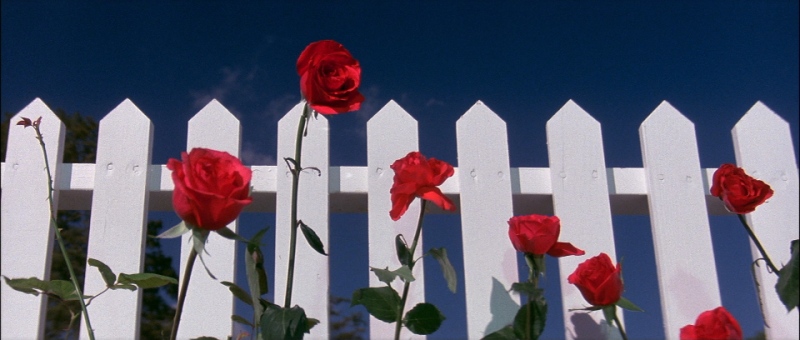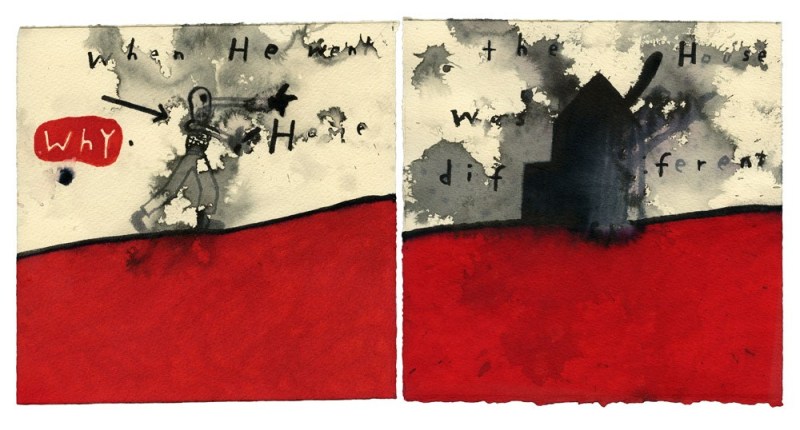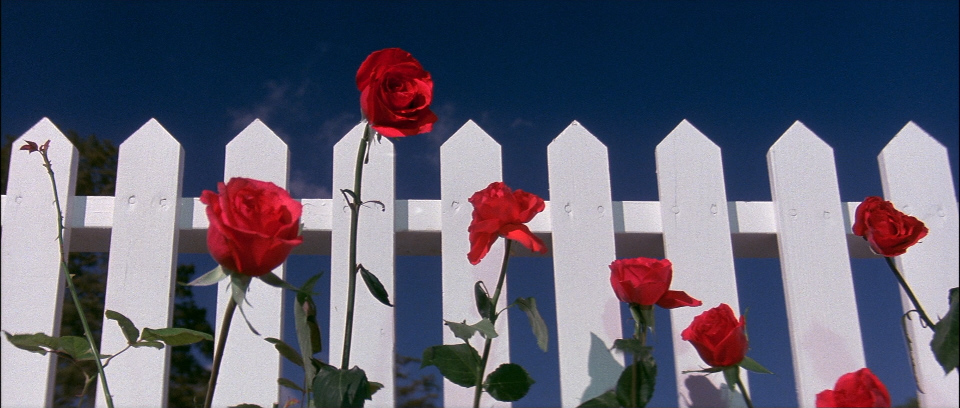By Curtis Woloschuk

Let’s just get this out of the way: I’m extremely jealous that Aaron Chapman gets to present Blue Velvet at the next edition of Cinema Salon. After all, this was the film that lured me into the darker waters of cinephilia at an extremely impressionable age. With Twin Peaks still airing weekly and our high school film teacher throwing caution to the wind and showing us the brutally violent opening scene of Wild at Heart to illustrate the importance of sound design, I made way to the local video store and rented Lynch’s 1986 masterpiece. The moment Roy Orbison hit the lilting, haunting high notes of “In Dreams,” my world was forever changed. And the woods, inlets, railway tracks and traffic lights of Port Moody, the town I grew up in, suddenly became extremely, unsettlingly different.
Consequently, I completely understand how Chapman can assert that Blue Velvet, in turn, reminds him of growing up in Kerrisdale, a neighbourhood that doesn’t so much seem sleepy as comatose. After all, part of Lynch’s power as an artist is to take the familiar and amplify it to absurdity, be it the images of wholesome, white picket fence-punctuated Americana that open Blue Velvet, or the intoxicating endorphin rush delivered by a damn fine cup of coffee served up in Twin Peaks. Of course, Lynch also attunes us to a pervasive sense of dread that wreaks havoc on the nerves like a vengeful affliction of tinnitus. So long as there is innocence, there will be forces eager to corrupt it.
Proving himself a man of his and Laura Palmer’s word (she cryptically promised, “I’ll see you again in 25 years.” in the original run’s final instalment), Lynch returned to Twin Peaks last year. The 18-episode run saw the auteur forsaking fan service in favour of investigating his long-standing fixations (doppelgängers), pursuing new aesthetic flourishes (jarring glitch effects) and trafficking in the most undiluted strain of his cinema since his 1977 debut, Eraserhead. The revered “Episode 8” is not only the series’ creative apex but also seemingly somewhat of an origin story for Lynch and his worldview. Just as the atomic bomb detonated in 1945 unleashes a malevolent force into the onscreen world, it seems safe to assert that it also saddled Lynch (who was unleashed a year later) with a clear understanding: You can grow up safe as houses in Missoula, Montana but, on a whim, the Atomic Age can visit obliteration upon you and all you hold dear.
While Lynch isn’t inclined to reveal too much about himself in interviews, his work suggests that he’s spent a lifetime (or an “art life” time, to borrow one of his preferred phrases) processing childhood trauma and fears. He’s shared how he saw a naked woman stumbling across a lawn in his youth and found the sight harrowing rather than arousing. And while this experience is explicitly repurposed in Blue Velvet, the idea of “a woman in trouble” recurs throughout his oeuvre, with many of his films (Lost Highway, Inland Empire) also delving into the sinister repercussions that follow when you defy parental warnings and let strangers in.
In February, my decades of Lynch devotion led me on a pilgrimage to Torun, Poland to experience Silence and Dynamism, a sprawling collection of Lynch’s paintings, photographs, music projects, short films and myriad other artistic pursuits. (I honestly had no idea that he’d also employed a series of plates as a narrative platform.) Over the hours spent wandering through the exhibition, I came to realize how many of the motifs and textures he’d explored in his paintings in the years following 2006’s Inland Empire, his most recent theatrical endeavour, had crept across mediums to insinuate themselves in Twin Peaks’ tour de force third season. I also found myself returning to one painting on multiple occasions, primarily due to its evocative title: When he went home the house was different. “When he went home the house was different” (2013), David Lynch
“When he went home the house was different” (2013), David Lynch
Well, of course it was. He’d been touched by Lynch.
For your viewing pleasure, here are three more Lynch-directed deep cuts showcased at Silence and Dynamism:
A series of non-canonical Twin Peaks commercials for a Japanese coffee:
An anti-littering PSA for New York City:
Lady BlueShanghai, a Marion Cotillard – starring promotional short for Dior:
Don’t miss the Cinema Salon screening of David Lynch’s ode to suburbia, Blue Velvet on Tuesday, April 17. Guest presented by Aaron Chapman.
Tickets: http://goviff.org/bluevelvet
Aaron Chapman is the author of The Last Gang in Town, the story of Vancouver’s Clark Park Gang; Liquor, Lust, and the Law, and Live at the Commodore. He has contributed to the Vancouver Courier, the Georgia Straight, Vancouver Magazine, and CBC Radio. A graduate of UBC’s film programme, he also studied with British director Peter Greenaway. Born and raised in Vancouver, Chapman will share how he sees Blue Velvet as a parable for growing up in Kerrisdale, where things aren’t what they seem, and while life was normal on the surface, below the surface, teeming underneath was a neighbourhood wild at heart.
